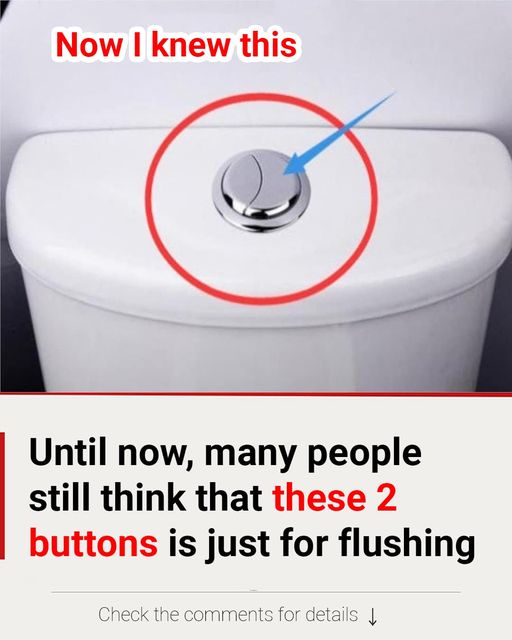If you’ve used a modern toilet lately, you’ve probably noticed the presence of two buttons on the top. Many people still assume that these buttons are merely for flushing waste, but they’re actually a part of an innovative system known as dual flush. This system is designed to conserve water more efficiently. So, what’s the real purpose behind these two buttons, and why is it so important? Let’s dive into how dual flush toilets work, why they matter, and how using them correctly can make a big difference in water conservation.

How Does the Dual Flush System Work?
The dual flush system is engineered with two buttons that control the amount of water used based on the type of waste being flushed. The larger button typically uses around 6-9 liters of water and is meant for flushing solid waste to ensure it’s fully cleared. On the other hand, the smaller button uses only 3-4.5 liters, which is sufficient for liquid waste, as it doesn’t require as much water to flush down.
By providing these two options, the system allows users to adjust water usage according to their needs, making it significantly more efficient than traditional toilets that use the same amount of water for every flush. This small change in how we flush can result in considerable water savings over time, especially in households with multiple people using the toilet throughout the day.
The Water-Saving Benefits of Dual Flush Toilets
One of the most significant advantages of dual flush toilets is their ability to save water. Traditional single-flush toilets release a set amount of water—usually between 9 to 12 liters—each time, regardless of whether you’re flushing liquid or solid waste. This fixed amount often leads to excessive water usage, particularly in larger households or commercial spaces where toilets are flushed numerous times a day.
With the dual flush system, users can choose the appropriate button depending on the waste type. This conscious decision can save a household up to 20,000 liters of water per year. Not only does this help the environment, but it also translates into lower water bills. In this way, dual flush toilets are a smart investment for both eco-conscious homeowners and those looking to save on utility costs.
The Financial and Environmental Impact
While it’s true that dual flush toilets can be more expensive to install than traditional models, the long-term financial benefits far outweigh the initial costs. By using less water with each flush, households can see a noticeable reduction in their utility bills over time. These savings can eventually offset the higher installation price, making dual flush toilets a practical choice for homeowners who are looking to reduce their water consumption and monthly expenses.
Beyond personal savings, there’s a broader environmental impact to consider. As dual flush toilets become more common, they help ease the strain on local water supplies and wastewater systems. This is especially important in regions facing frequent droughts or water shortages. By conserving water, these toilets play a crucial role in promoting sustainability and helping communities become more resilient to environmental challenges.
The Origins of the Dual Flush System
The concept of dual flush toilets was pioneered by Victor Papanek, a designer known for his focus on sustainable design. His idea was to reduce water waste by providing two flushing options tailored to the type of waste being flushed. This innovative concept was first implemented in Australia during the 1980s, a country that has long faced water scarcity and is committed to conservation.
The success of dual flush toilets in Australia eventually led to their adoption in other parts of the world, particularly in Europe and North America. As global awareness of water conservation grew, more homes, offices, and public buildings began to install dual flush systems as standard fixtures. Today, they are widely recognized as a simple yet effective way to reduce water usage.
Why Are People Still Confused?
Despite the clear benefits, many people remain unsure of how to properly use dual flush toilets. Without clear instructions, it’s common for users to default to pressing the larger button, even when it’s unnecessary. This habit reduces the potential water savings these systems offer.
To maximize the effectiveness of dual flush toilets, education is key. Simple measures like adding labels near the buttons or providing instructions in public restrooms can help users understand which button to press. By making users aware of the difference, we can encourage more efficient water usage and ultimately save thousands of liters of water each year.
Small Changes That Make a Big Difference
Dual flush toilets are more than just a modern bathroom fixture—they are a valuable tool for conserving water. By understanding how they work and using the correct button based on the type of waste, individuals can make a meaningful impact on water usage. While the upfront cost may be higher than that of traditional toilets, the long-term savings on water bills and the reduced environmental footprint make it a worthwhile investment.
Embracing a More Sustainable Future
As society becomes more aware of the importance of sustainable living, dual flush toilets represent a small but impactful step toward a greener future. In addition to conserving water, these toilets also contribute to reducing the energy needed to treat and transport water, thereby lessening our environmental impact.
For homeowners, the financial benefits are another strong incentive. The reduction in water bills over the years can easily offset the initial installation costs, making dual flush toilets an attractive option for anyone looking to lower their household expenses while also being environmentally responsible.
Conclusion: Making Every Flush Count
In the end, adopting dual flush toilets is a simple yet powerful way to contribute to water conservation. By choosing the right button for each flush, we can significantly reduce water waste. This small change in behavior not only saves money but also supports a larger goal of protecting our planet’s limited water resources.
So, the next time you encounter a toilet with two buttons, remember that they’re not just for flushing—they’re there to help conserve water, save money, and protect the environment. By making thoughtful choices, we can all play a part in creating a more sustainable future, one flush at a time.





